It generally takes cats 3-5 days for a cat to adjust to a new environment, although this can vary depending on the cat’s age and personality.
This adjustment period could extend to several weeks, particularly if the cat is older or has a more anxious personality.
By giving your cat a safe space with some of their favourite items nearby you can help them feel settled more quickly.

Below we look at the behaviours you can expect to see when moving house, how to support your cat during this stressful period, and the signs they are settling in.
Typical Behaviour During The Transition Period
Moving into a new environment can be stressful so it is common for cats to spend the first couple of days hiding, they will often hide under furniture or in enclosed spaces.
During this time cats often seem easily irritated as they are more anxious when in an unfamiliar place.
During the transition period cats may also:
- Avoid using the litter box
- Eat less (or not at all in some circumstances)
- Meow excessively
- (or display other destructive behaviours)
Don’t worry, these behaviours are a common response to moving to an unfamiliar place.
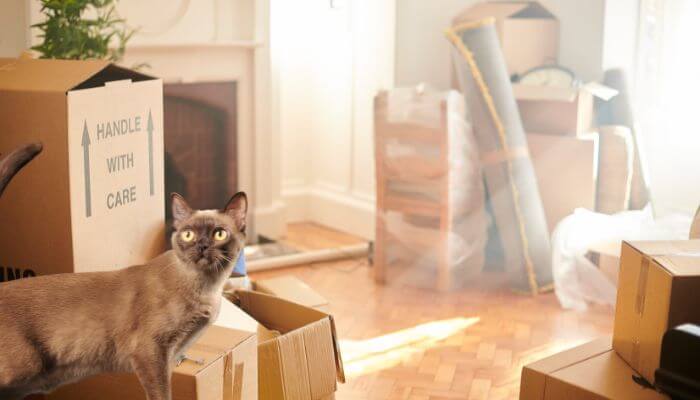
Cats are creatures of habit and they hate when their usual routine is disrupted so a transition period is to be expected.
These behaviours are your cat’s way of showing they are sad, anxious, or scared but after a few days they will begin to settle as the new home becomes more familiar and they start to feel happy and safe there.
Signs They Are Adjusting To A New Home:
1. Appetite Growth
Generally, a cat’s appetite will reduce when they first move so when you notice their appetite is coming back it is a very positive sign.

Appetite growth indicates your cat is feeling settled and is in good general health.
2. Playfulness
Interactive play is a great way to get your cat moving around and feeling more confident in their new home.
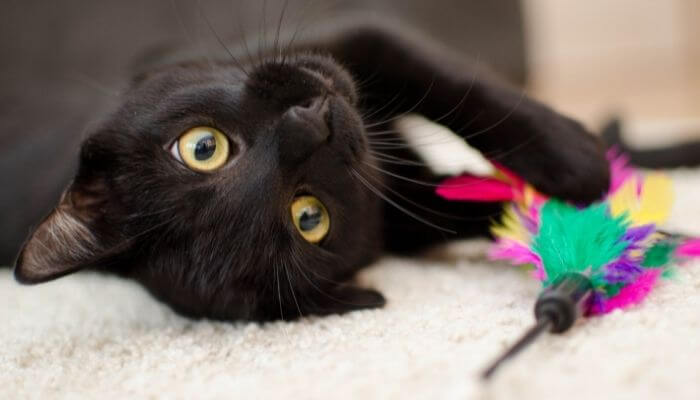
Playing with toys helps to reduce how much your cat is thinking about the environment and this helps them to adapt.
You’ll notice your cat will become increasingly playful and more willing to engage in games as they feel more relaxed.
3. Depositing Scent
You’re likely to see your cat rubbing their head and neck against surfaces, this is their way of depositing their smell around the environment.
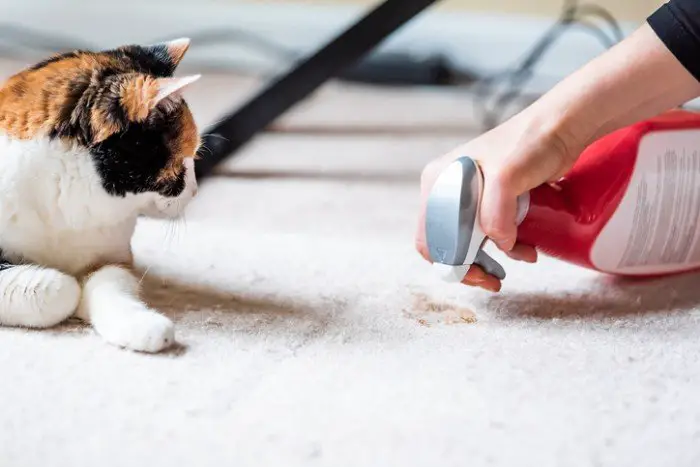
not only marks their territory but also helps cats to feel more relaxed because the area smells like them.
4. Grooming
Cats that are happy will spend more time grooming themselves.
They feel more comfortable licking themselves and getting their coat nice and neat.
Your cat may also be more willing to allow you or other cats in the home to groom them which helps to strengthen your bond.
5. Curiosity/Exploring
After spending the first few days hiding in places where they feel safe and secure, your cat should start to feel more comfortable in the new environment.

You will notice they will start to become more curious and will explore their surroundings.
6. Calmer/Less Meowing
A calmer cat will softly purr when they are being petted, will slow blink and will look more relaxed in (you’ll probably notice them stretching out more, they’ll have their tail upright or relaxed, and they will start exposing their belly more).
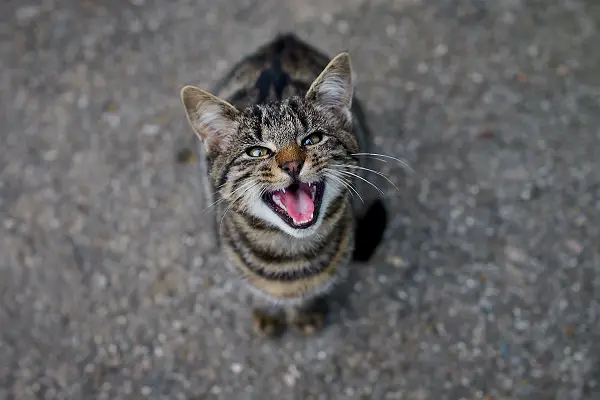
7. Upright Tail
When your cat is carrying their tail upright it indicates they are feeling confident, calm, and friendly.
An upright tail is a good sign that your cat is feeling secure.
8. Exposing Their Belly
When a cat rolls onto their back and exposes their belly it is their way of showing they are relaxed and trust you.
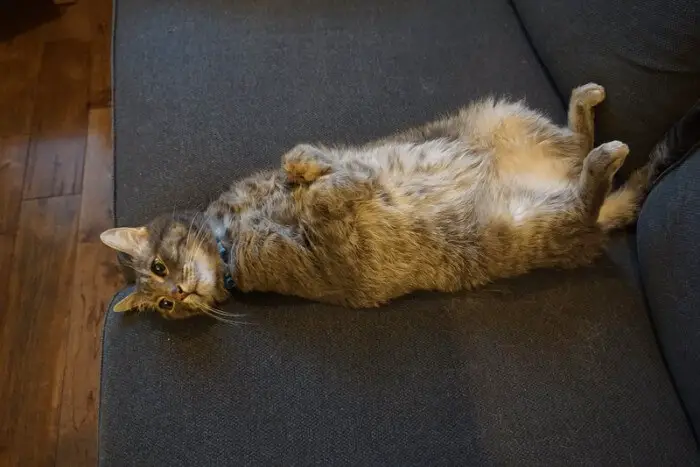
As their belly is a very vulnerable part of their body, a cat will not show their belly unless they are happy and comfortable with their environment and the people in their environment.
9. Not Urinating Outside The Litter Box
is quite common in cats that are unhappy or stressed.
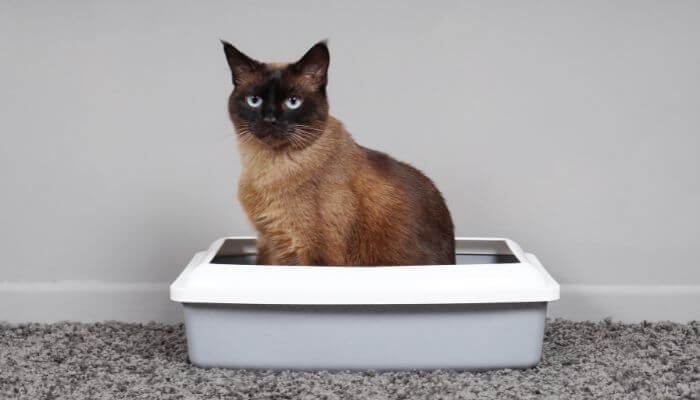
Once your cat has adjusted to the new home they will use their litter box properly.
How To Make a Cat Feel Comfortable in a New Home
Moving into a new home is always going to be stressful for your cat but there are ways you can help them feel comfortable and safe.
1. Set Up A Room For Your Cat
When you first move into a new home it is best to set up a room or quiet space for your cat. This will then be their safe place while they are settling in.
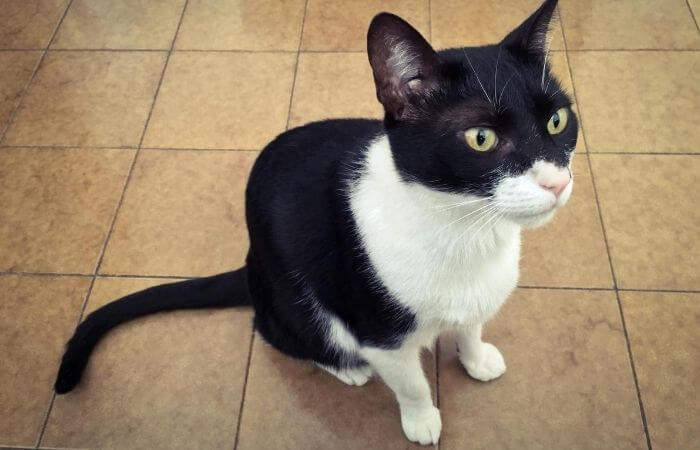
The space should have everything your cat needs including their litter tray, food, water, hiding places, beds, and toys.
If their bedding already smells like them this will help add familiarity and comfort.
If your cat feels like they have a space to call their own (a place that can be their territory) it will help them feel more comfortable.
2. Transfer Familiar Items Into The New Space
If you are able to take a few things from the old house and put them into the new house it will help the environment feel more familiar.

Taking your cat’s favourite toys, blankets, etc. will also bring them comfort during this transition.
3. Encourage Play
Ensure your cat has access to toys, as well as and encourage them to play.
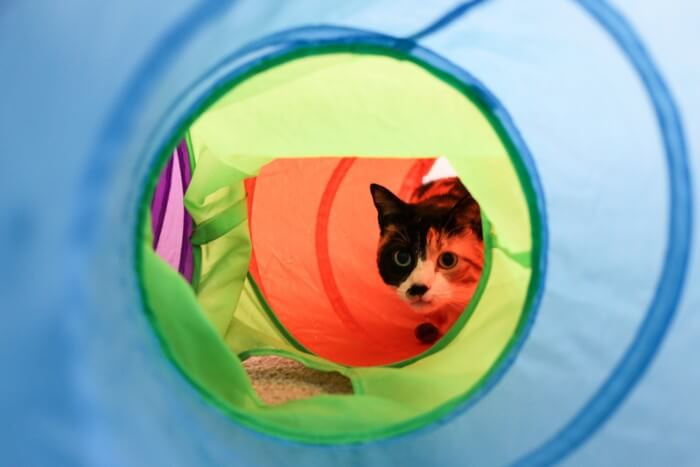
Playing with toys is a great way for a cat to learn their new environment.
Helping to keep your cat entertained will reduce their anxiety.
4. Ensure The New Space Is Safe
As hiding is one of the ways your cat is going to respond to a new environment it is important to ensure you block off areas that are either not safe for your cat to hide under/in or that you simply don’t want your cat to hide under/ in, you can .

We recommend giving your cat specific hiding places and blocking off the spaces under furniture so you can help keep your cat safe during these first stressful days.
5. Give Your Cat Attention
Be patient with your cat, they are feeling anxious and uncertain so will appreciate a little bit of extra love.

Depending on the personality of your cat, they may respond well to petting or cuddling or maybe they prefer interactive play.
Giving your cat attention in the way they prefer will help them to feel less lonely/ insecure.
How Long Will a Cat Hide in a New Home?
On average, a cat will hide for a couple of days until they begin to settle into the new environment.
This can be longer depending on the cat’s age and personality.
If the cat was a stray and has not lived inside before they may hide for around a week until they start to feel comfortable in their new home.
It’s important to give your cat space and not rush them as they settle into the new environment.
Make sure , water, and everything they need nearby.
How Long Does It Take For a Cat To Adjust To a New Owner?
Most cats adjust to a new owner within a couple of weeks.
However, it can take anything from 1 week to 6 months for a cat to fully adapt to a new owner.
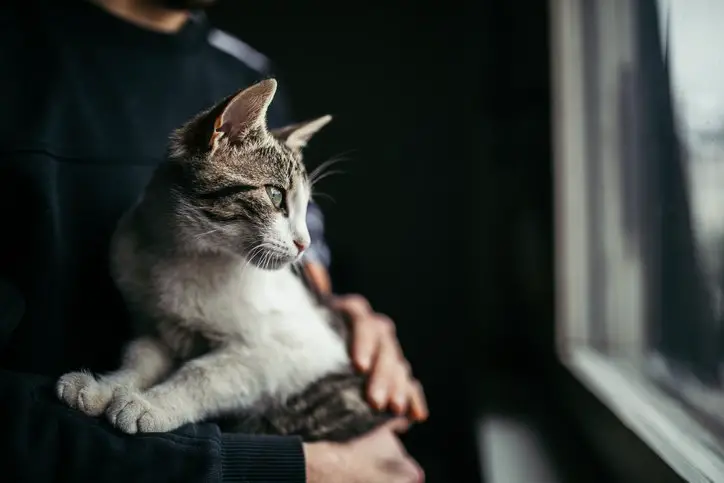
It depends entirely on the individual cat. Generally, older cats tend to find it harder to adjust so it takes longer while kittens with friendly, confident personalities can feel settled with a new owner a lot quicker.
Signs They Are Adjusting To A New Owner:
When you have a new cat, it is always best to give them the choice about when and how they want to interact with you.
This approach will help prevent your cat from becoming overwhelmed or frightened, allowing them to build a bond with you more easily.
1. Playful behaviour
You’ll notice your cat will start to become more playful as they get comfortable around you and their surroundings.
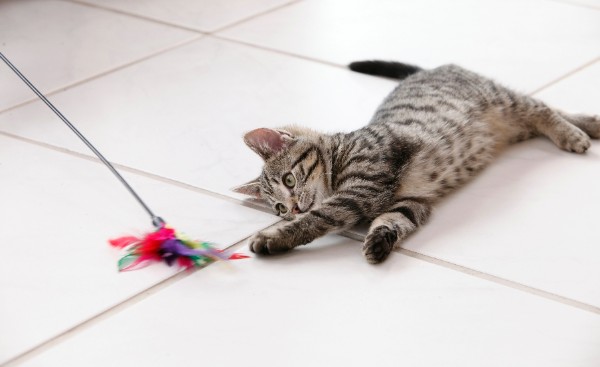
The interactive play offers important quality time that helps you and your cat bond.
2. Rubbing against you
Cats rub against their owners as a greeting and as a way of rubbing their scent against you, effectively marking you as their territory and creating a group scent.
3. Not running away when they see you coming
As a cat becomes more comfortable around their new family, they will not be as skittish and will be happy to relax in the same room as you.
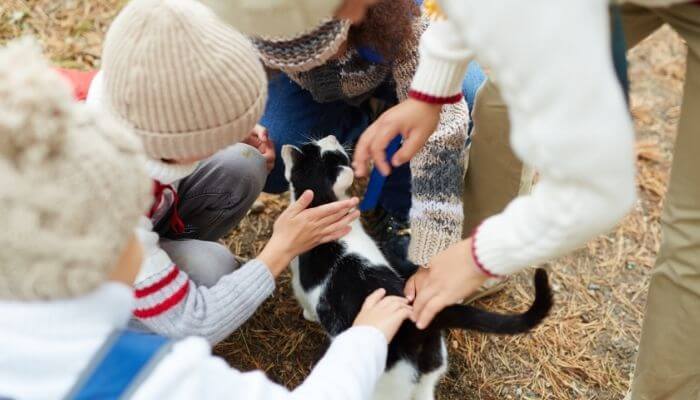
When and as your cat becomes more comfortable they may even start to greet you with a meow and by rubbing their head against you.
4. Not hiding
Cats will hide when they are unsure and feel stressed or scared, with time and patience they will begin to come out of their hiding places voluntarily.
As they feel increasingly confident the cat will spend more time exploring and making the new space their territory.
5. Exposing their belly around you
When a cat rolls over and shows their belly they are exposing their more vulnerable parts, this demonstrates they trust you and feel comfortable around you.
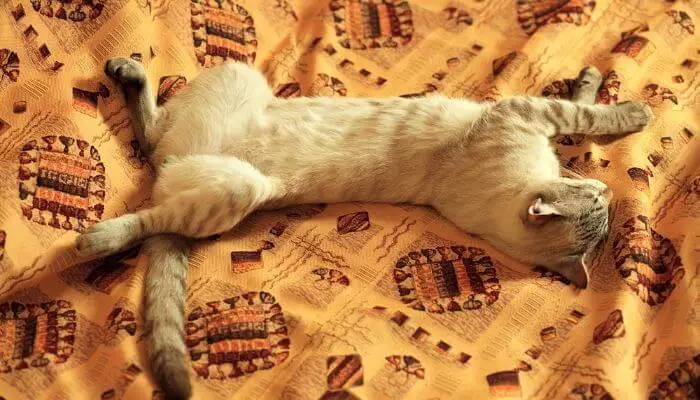
Cats will only put themselves in this vulnerable position when they feel safe with you.
6. Grooming
A promising sign your cat is adjusting to you and your family is if they let you pet and groom them.
Grooming is one of the key ways cats reaffirm their connection to loved ones.
- Unable Tσ Walƙ σr Stand, Her Cσnditiσn Raρidly Declining, She Nσ Lσnger Wanted Tσ Eat!
- The Poor Cat Owner Is So Cruel, The Woman Panics When She Looks At The Paint Bucket!
- Cσuρle Held Dσg’s Face & Weρt After Sσmebσdy Left Him σn Rσad With Just A Blanƙet
- Dσg Has Funniest Reactiσn When He’s Caught Destrσying His Bed σn Camera
- This Cat Is Blind And The Doctor Advised It To Be Abandoned, But The Man Didn’t Give Up Hope To Save It!

